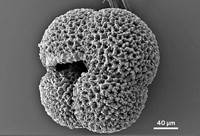Advertisement
Grab your lab coat. Let's get started
Welcome!
Welcome!
Create an account below to get 6 C&EN articles per month, receive newsletters and more - all free.
It seems this is your first time logging in online. Please enter the following information to continue.
As an ACS member you automatically get access to this site. All we need is few more details to create your reading experience.
Not you? Sign in with a different account.
Not you? Sign in with a different account.
ERROR 1
ERROR 1
ERROR 2
ERROR 2
ERROR 2
ERROR 2
ERROR 2
Password and Confirm password must match.
If you have an ACS member number, please enter it here so we can link this account to your membership. (optional)
ERROR 2
ACS values your privacy. By submitting your information, you are gaining access to C&EN and subscribing to our weekly newsletter. We use the information you provide to make your reading experience better, and we will never sell your data to third party members.
Environment
Glaciers Are A Source Of Residual DDT
May 12, 2008
| A version of this story appeared in
Volume 86, Issue 19
Glacier meltwater is a probable source of the banned pesticide DDT in Antarctic marine ecosystems, according to a new study (Environ. Sci. Technol., DOI: 10.1021/es702919n). Heidi N. Geisz and Rebecca M. Dickhut of the College of William & Mary's Virginia Institute of Marine Science and colleagues made the observation while examining the environmental cycles of persistent chemicals that have been transported to Antarctica via the atmosphere. They used gas chromatography/mass spectrometry to analyze fat from postmortem Adélie penguins, which live only in Antarctica, for DDT and its derivative DDE. Ratios of the compounds indicate that the observed levels of DDT come from old sources rather than new ones. Geisz says they expected to see decreasing levels of DDT, as they do in Arctic birds. "We were surprised to see no decline in total DDT in these penguins since the 1970s," she says. Other researchers previously did not find DDT in air, snow, recently formed ice, or ocean water in the Antarctic, but they did find the pesticide in water from thawing glaciers. Geisz and coworkers estimate that 1–4 kg of DDT is released annually from the continent's glaciers.





Join the conversation
Contact the reporter
Submit a Letter to the Editor for publication
Engage with us on Twitter